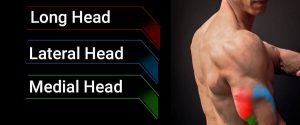The Good Morning Exercise Is an Advanced Exercise to Bolster Your Posterior Chain
Suppose you’re a newly joined person who has just started working out and doesn’t have prior experience. In that case, the good morning exercise is totally unheard of for you, and it’s even recommended that you concentrate on a beginner’s workout routine like a full-body workout instead of looking towards any advanced movement like the good morning exercise.
However, if you’re an intermediate who has seen someone doing the good morning exercise and are curious to find out what that strange-looking chiropractic movement is all about, keep on reading. We’ll get into details about the same.
What Is the Good Morning Exercise?
In definition, the good morning exercise is a strength training exercise. It’s called a good morning due to its movement within the erector spinae, which is quite like the bow done in some East-Asian countries.
The good morning exercise is for intermediate to advanced level gym-goers. Likewise, it targets your core and posterior chain muscles. But, before you think about trying the good morning exercise, it’s recommended that you’ve good experience of weight training fundamentals, including proper experience of certain exercises such as squats.
Suppose you’re an experienced lifter and go with exercise like squats easily while keeping correct form and solid spinal alignment – good morning exercise can be a good exercise in your list to bolster your back health. It’s among the money move for weightlifters, sportsmen, marathon runners, and office workers, as it helps to strengthen your lower back and core muscles while lightly stretching and strengthening your hamstrings.
Here’s How to Do Good Mornings Exercise
Below are the step-by-step instructions to do the good morning exercise:
- First, stand with your shoulder-width apart stance.
- Place the barbell on your shoulders. In other words, the barbell should be resting on the trapezius muscles of your upper back near to shoulders.
- Brace your abdominal muscles and take a breath in.
- Now start exhaling as you start hinging at the hips. Once you start hinging your hips, it should feel like you’re sending your hips backward, or else imagine someone is pulling your hips backward using a rope around the hips.
- Keep your back straight and inhale. Also, keep your lower back arch as tight as possible as you would while lifting from the floor.
- Now, exhale and be sure that your chest and head are up and forward. Likewise, make sure that your back isn’t curling back forward.
- Breathe in and go back to the initial position.
Note: If you’re doing the good morning exercise for the first time, then it’s recommended that first you do it without weight and correct the form and then move forward with the only barbell and then start adding weights little by little.
The Good Morning Exercise – What Are the Benefits?
Some of the benefits of good morning exercise you can expect are:
Bolster the Health of Your Lower Back
The good morning exercise requires you to hinge forward, and that movement recruits your glutes, hamstrings & spinal erectors that are in your lower back. These muscles get recruited when you perform an exercise such as the back squats, clean & jerk, deadlift, and snatch. However, the good morning exercise has an edge. The good morning exercise isolates your lower back muscles, which helps strengthen your glutes, hamstrings & spinal erectors.
Likewise, the spinal erectors are the major components of your core muscles. It means it’s more than just your abs.
Put simply, your core muscles are like a weightlifting belt that keeps your entire torso tight. Similarly, the spinal erectors also make up of the backside of your core. Therefore, stronger the spinal erector muscles better the ability to protect your spine while bracing your core.
Develops Your Hamstrings & Glutes
Your glutes and hamstrings are other main moves in the good morning exercise. Interestingly these two posterior chain muscles – hamstrings and glutes also play a major role in exercises like squat, deadlift variations, and hip thrust. Likewise, it is also vital for overhead presses, bench presses, and other upper body exercises.
From an aesthetic point of view, good morning exercise is beneficial for adding muscle size to your hamstrings and glutes. Lastly, it’s recommended that you go for low weight and high reps for good morning exercise.
Helps Strengthening Your Upper Back
When done correctly, the good morning exercise helps to strengthen your upper and lower back. Likewise, enhancing the tension of the upper back and stability of your lower back can help you hold the barbell tightly in the back. Again, it’s even helpful for those lifters who fall forward during squats or cannot recover from poor positioning.
Note: Good morning exercise can prove helpful in aiding the proper technique of squats and deadlifts. But it shouldn’t be taken as the only solution, and instead, you should address your weak points.
Good Morning Exercise Works What Muscles – Know Which Muscle Group Are Targeted
In general, good morning exercise is good for your posterior chain muscles. But it mainly focuses and isolates these main muscles:
- Lower Back
- Glutes & Hamstrings
Lower Back
When good morning exercise is done correctly, lower back muscles stabilize your trunk and allow your hips to flex. However, due to this movement, your hamstrings and glutes get eccentrically loaded and contract concentrically. Henceforth, the good morning exercise, especially the seated variation, activates more spinal flexion and extension, which targets your lower back.
Glutes & Hamstrings
Your glutes and hamstrings get targeted at the time of hip extensions when you’re in the hinging motion. Likewise, your glutes and hamstrings get eccentrically loaded and then contracts when you come back to the upright position.
Variations of the Good Morning Exercise
Below are the two variations of the good morning exercise that can prove helpful to improve your strength, performance:
Seated Good Morning
Those interested in isolating their spinal erectors and minimizing hamstring involvement can go for the seated good morning variation. Though, you won’t be able to lift heavier as you can in the standing variation of the good morning exercise. But, if you go for the seated good morning, it’ll purely target your lower back, and it’ll take your glutes and hamstrings out of the movement.
Good Morning With Safety Bar
Whether you’re a pro or a newbie, going for the good morning exercise using a safety bar instead of the straight barbell on the back will alleviate pressure on your shoulders. It’s a great substitute that forces lifters to brace the core and keep a back in a flat position more effectively. Likewise, it’s also a good option due to its ability to keep the load safely and securely on your shoulders.
The Good Morning Exercise Substitute – What Are the Alternative Exercises?
Not feeling comfortable with the good morning exercise, or have any other issues? Below are the two good morning exercise substitute:
Hyperextensions
Like the good morning exercise, hyperextension exercise targets the same muscles. However, hyperextension also isolates your lower back muscles. Thus, you can say hyperextension is quite like the seated variation of the good morning exercise. Furthermore, it’s also a good option if you struggle to keep your back flat at the time of the good morning exercise.
Romanian Deadlift
The Romanian deadlift is another option for bigger, stronger glutes and hamstrings, which is also a good alternative for good morning exercise. Likewise, it’s also a good alternative for lifters looking for pulling specific accessory exercise movement or else who struggle with loading barbell onto their back correctly.
The Good Morning Exercise – Reps & Sets Recommendations
Depending on your training goal and program, you can utilize the good morning exercise to build muscle and strength.
- For building muscles, it’s recommended that you go for three to five sets for 10 to 12 repetitions.
- For improving strength, you can choose the five to ten rep range.
Good morning is an accessory exercise. Therefore, you shouldn’t train for maximum strength like you do for squats and deadlifts.
Likewise, it’s not mandatory to include this exercise movement as metabolic conditioning. And you can incorporate the good morning exercise for strength and warm-up, depending upon your workout routine.
The Good Mornings vs. Deadlifts – Here’s How Both Differs From Each Other
Good morning and deadlifts are potent exercises, but there’s a difference among them though it targets your lower back. For instance, good morning uses hinge motion from the hips. On the other hand, deadlift goes for an up and down motion, and it’s also the push movement.
Furthermore, good mornings are good for isolating your glutes and hamstrings. And, the deadlift uses your entire body while keeping more emphasis on the lower body, such as quadriceps, glutes, and hamstrings.
Wrapping Up
The good morning exercise is the posterior chain strengthening exercise. Therefore, it’s recommended that you include this exercise regularly, especially if you work at the office for 9 to 5, where you sit for longer hours. However, if you’re an athlete or fitness enthusiast, we recommend avoiding lifting heavy to boost your ego and instead go for moderate weights, as it’s an accessory exercise.
FAQs
Can We Do the Good Morning Exercise With Dumbbells?
Yes, you can choose to go with the dumbbells for the good morning exercise, but it’ll look quite awkward. Therefore, it’s recommended you select its alternate version, such as Romanian deadlift or Hyperextension exercise, if you can’t do it correctly with the barbell.
Can We Do the Good Morning Exercise Without Weights?
Yes, you can do bodyweight good morning without using any weights. It’s a good option if you’re just starting with the good morning exercise or doing it for the first time. Likewise, bodyweight good morning exercise is also a good warm-up for your lower back, glutes, and hamstrings before going for lower body or legs exercise.
What Are Some Common Mistakes People Do With the Good Morning Exercise?
Three commonly seen mistakes with the good morning exercise are:
- Going too heavy, which is not good because it’s an accessory exercise.
- Not properly warmed up.
- Not using correct form.
What Muscle Group Does the Good Morning Exercise Target?
Usually, the good morning exercise targets your posterior chain muscles with other muscles of your backside. But to be specific, it helps strengthen your lower back, glutes, and hamstrings.
Is Good Morning Exercise Bad for Your Back?
If you’re a healthy individual without any medical history, you should incorporate good morning exercise into your workout routine. It’s one of the spinal stabilizer exercises that help to strengthen your lower back along with other posterior chain muscles.
How Many Reps Are Good for the Good Morning Exercise?
Usually, from five to ten rep range is best to go with.
Does Good Morning Exercise Build Muscle?
Primarily, the good morning exercise helps in strengthening your posterior chain muscles. It means it will help to strengthen your glutes and hamstring mainly. Likewise, if your back tends to give out, then good morning is the good option to work on that issue.






